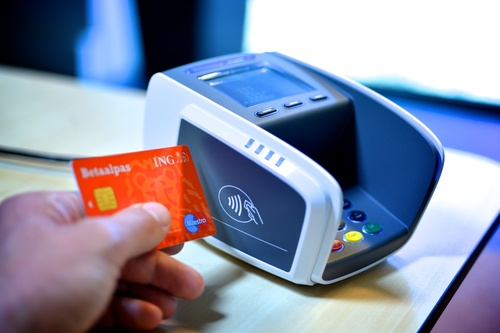47 % des paiements chez les commerçants réalisés en mode sans contact
Le recours au paiement sans contact a explosé en 2020 suite à la mise en place du confinement. Plus précisément, 47 % des paiements par carte chez les commerçants ont été effectués par ce biais, contre un tiers seulement en 2019. Cette part a progressé pour atteindre les 52 % en décembre 2020. En volume, cela équivaut à plus de 4 milliards de transactions, contre 3,3 milliards l’année précédente.
Malgré ce constat, le maître des paiements reste le cash qui représentait encore 60 % des transactions en 2019, tous paiements confondus (en magasin et à distance).
Une adoption rapide du nouveau plafond
Le recours au paiement sans contact s’est intensifié avec la hausse du plafond à 50 euros. Cette nouvelle règle a rapidement été adoptée par les Français puisqu’à peine un mois après son instauration, 35 % des paiements supérieurs à 30 euros étaient réalisés sans contact.
La généralisation du paiement sans contact s’explique aussi par une sécurité jugée forte par les utilisateurs. En effet, si la carte reste le moyen de paiement scriptural le plus utilisé, représentant près de 60 % de ces opérations, son taux de fraude se maintient à son plus bas historique, à 0,064 %, précisait en septembre la Banque de France. De son côté, le paiement sans contact sur mobile tarde à décoller en France contrairement à d’autres pays comme la Chine.
Sans contact : une augmentation des refus
Le sans contact connaît quelques déboires, notamment avec une hausse du nombre de refus. Ceux-ci sont souvent liés à un mécanisme de sécurité qui contraint le détenteur à taper son code pour prouver qu’il est bien le propriétaire légitime de la carte bancaire. Autrement dit, même en faisant attention à ne pas dépasser le plafond fixé par la banque, il est impossible de payer uniquement en mode sans contact. Si les demandes d’autorisation ne sont pas automatiques pour les paiements de moins de 30 euros, « au-delà, chaque paiement par carte fait l’objet d’une demande d’autorisation qui remonte jusqu’aux banques », explique aux Echos Jean Michel Chanavas, le délégué général de Mercatel. Dans ce cas, la vitesse de transaction dépend de la fluidité du réseau.
Ainsi, le recours au paiement sans contact est l’une des conséquences de la crise du Covid-19 et devrait s’installer durablement dans les habitudes des Français.
